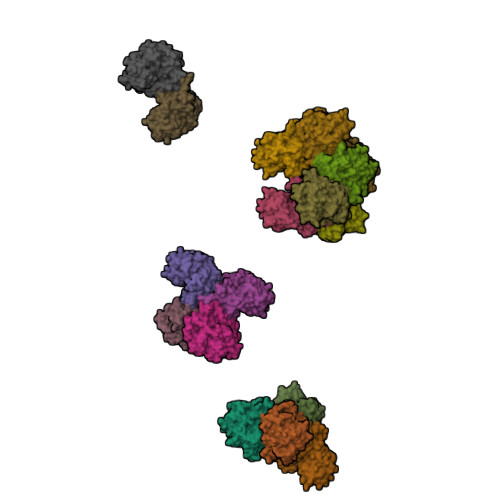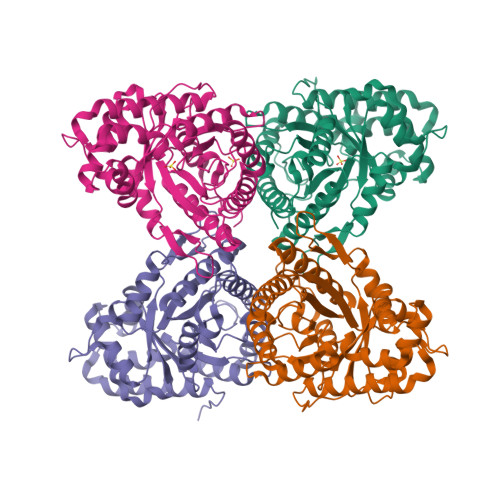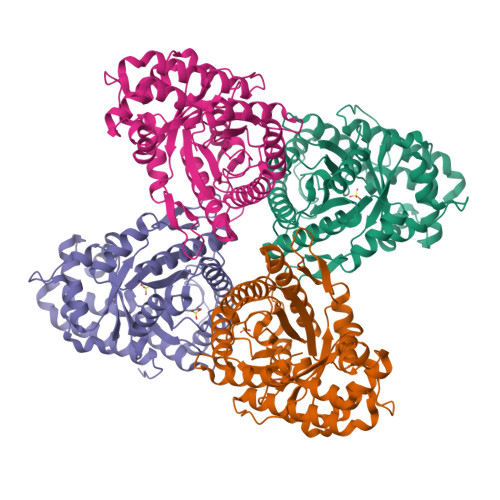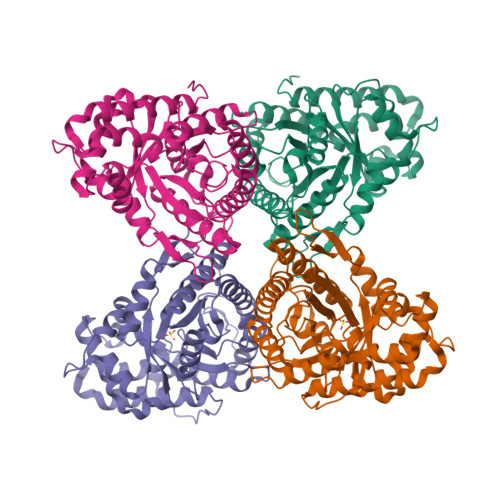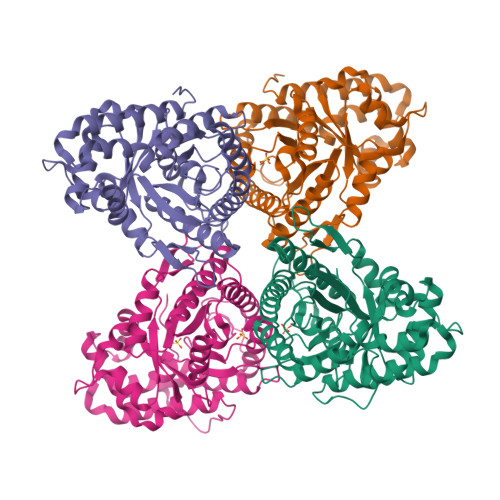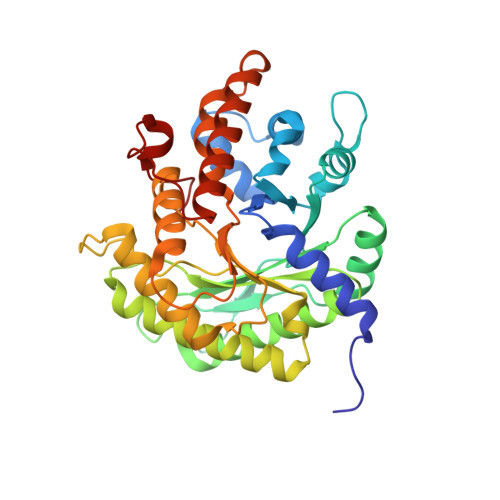The Structure of Human Liver Fructose-1,6-Bisphosphate Aldolase
Dalby, A.R., Tolan, D.R., Littlechild, J.A.(2001) Acta Crystallogr D Biol Crystallogr 57: 1526
- PubMed: 11679716
- DOI: https://doi.org/10.1107/s0907444901012719
- Primary Citation of Related Structures:
1QO5 - PubMed Abstract:
The X-ray crystallographic structure of the human liver isozyme of fructose-1,6-bisphosphate aldolase has been determined by molecular replacement using a tetramer of the human muscle isozyme as a search model. The liver aldolase (B isozyme) crystallized in space group C2, with unit-cell parameters a = 291.1, b = 489.8, c = 103.4 A, alpha = 90, beta = 103.6, gamma = 90 degrees. These large unit-cell parameters result from the presence of 18 subunits in the asymmetric unit: four catalytic tetramers and a dimer from a fifth tetramer positioned on the twofold crystallographic axis. This structure provides further insight into the factors affecting isozyme specificity. It reveals small differences in secondary structure that occur in regions previously determined to be isozyme specific. Two of these regions are at the solvent-exposed enzyme surface away from the active site of the enzyme. The most significant changes are in the flexible C-terminal region of the enzyme, where there is an insertion of an extra alpha-helix. Point mutations of the human liver aldolase are responsible for the disease hereditary fructose intolerance. Sequence information is projected onto the new crystal structure in order to indicate how these mutations bring about reduced enzyme activity and affect structural stability.
Organizational Affiliation:
School of Chemistry, University of Exeter, Stocker Road, Exeter EX4 4QD, England.








